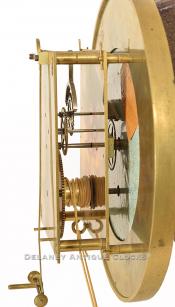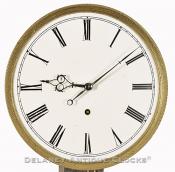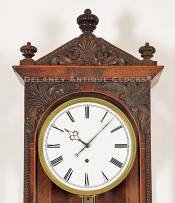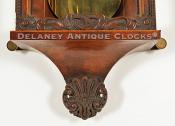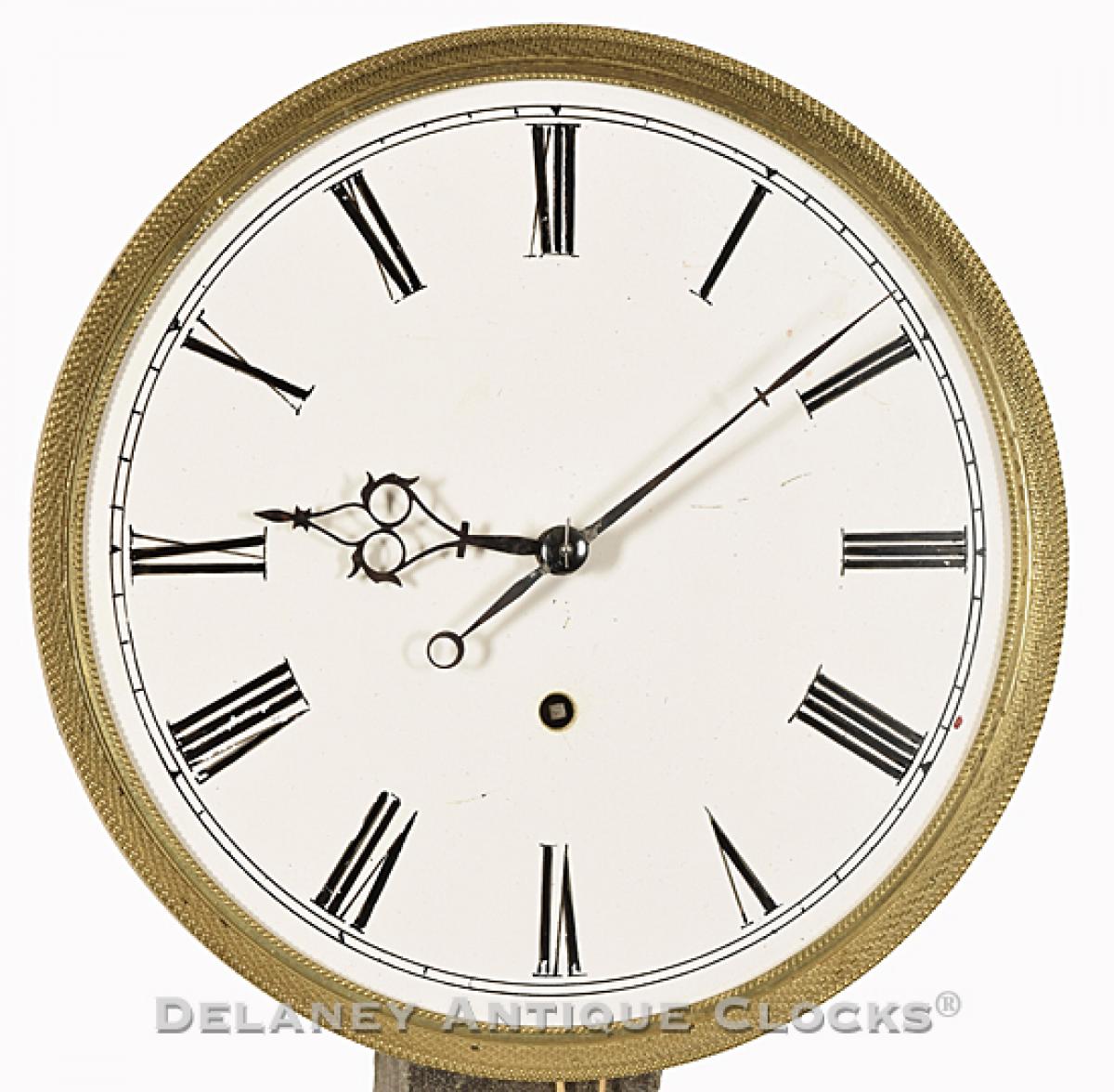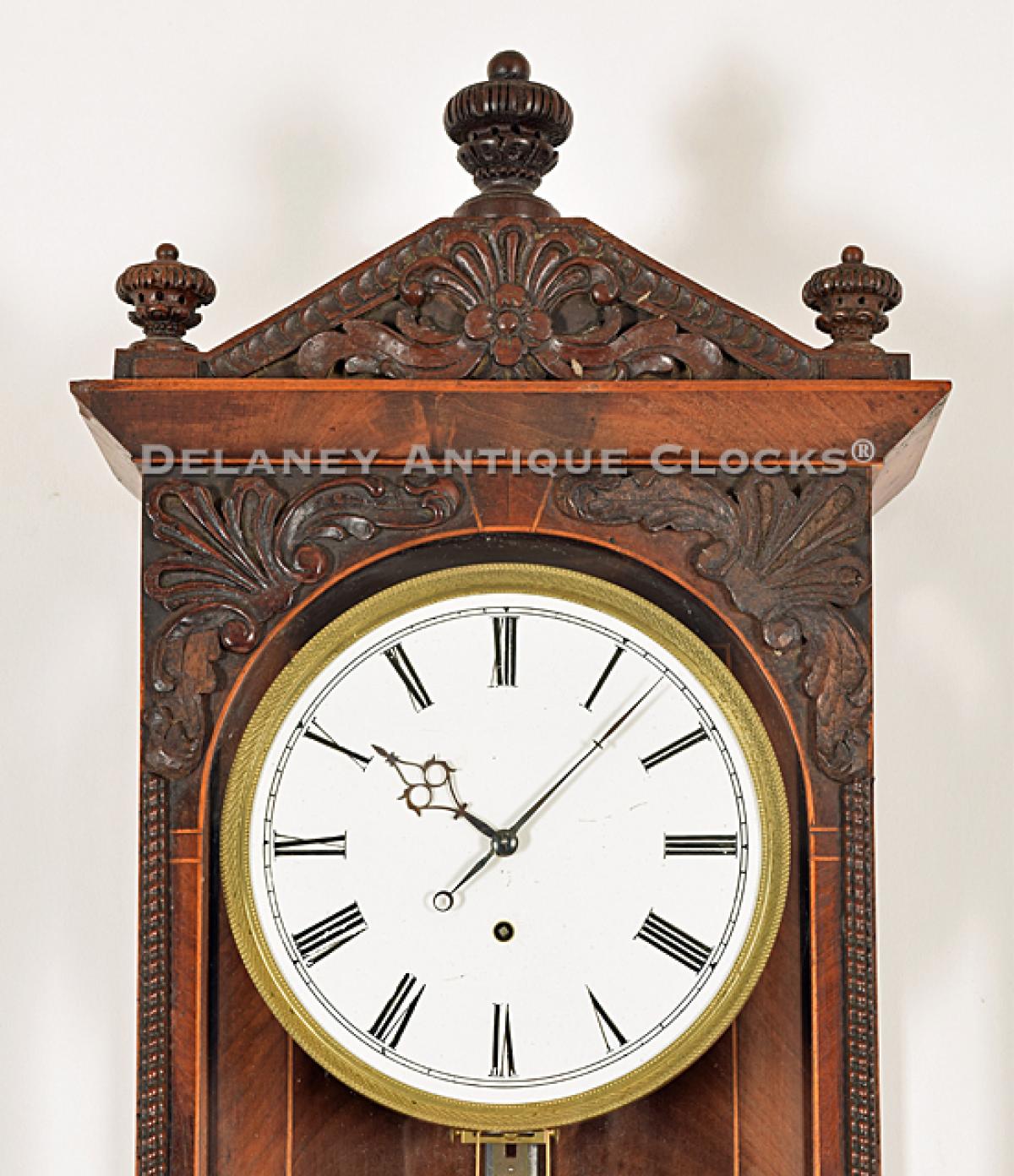A late Biedermeier period Vienna Regulator. A very attractive design. 221054
Vienna regulators as a group were produced in relatively large numbers between the years of 1800 through 1900. The center for this production was in Vienna, Austria. They were exported from there to many European countries and sold very well. As a result, were copied by numerous competitors and evolved in form.
The earliest form was made from 1800 to about 1820. They generally featured straight wooden frames with inlay and satin banding. The sides of the case and the doors are fitted with glass. The dials were composed of a single piece of glass and were generally flat. They were fitted into cast bezels.
The second period was called the "Early Biedermeier" period. This form was produced from about 1820 into the early 1840's. These clocks become simpler in form.
In the late Biedermeier period, the simple cases start to incorporate simple columns, light carvings and the cases may feature curved moldings. Many of the clocks from this period feature two piece dials that are separated by a brass ring. The outer bezels are still cast. These clocks were made into the early 1860's.
By 1870, almost all the clock cases are ornately designed with the exception of the straight Art Nouveau box style. The dials where almost always a two piece design. Occasionally the inner section is brass. The later half of the period seems to have introduced all metal dials as well as spring driven movements. Weight driven movements became too expensive to produce and could not compete with the Industrialized methods of Germany.
This is a very attractive example that dates from the late Biedermier period, circa 1850. This well proportioned case is veneered in mahogany and retains an older finish. Skillfully executed carvings are use to decorate the many of the forward facing surfaces. Floral themes dominate the carved sdesigns. The backboard is veneered in figured mahogany. The center panel is framed in a light line inlay. The one piece flat dial is glass and the painted time ring measures approximately 5.25 inches in diameter. The hour numerals are a Roman style. These are small and lightly formed. The time is indicated by nicely formed steel hands. The cast brass bezel is heavy and is excellent quality. It is decorated with a finely executed pattern. The movement is constructed in brass. It is weight powered and designed to run for one week on a wind. The plates are a trapezoid shape and are held together with four turned posts. The plates support light gearing and the escapement is a deadbeat design. This movement is mounted to a bracket that is secured to the back of the case. All in all, this a is very good quality set up. The pendulum rod is wood and this supports a brass faced bob.
This case measures approximately 36 inches in length. It is 9.25 inches wide and 5.25 inches deep.
221054


